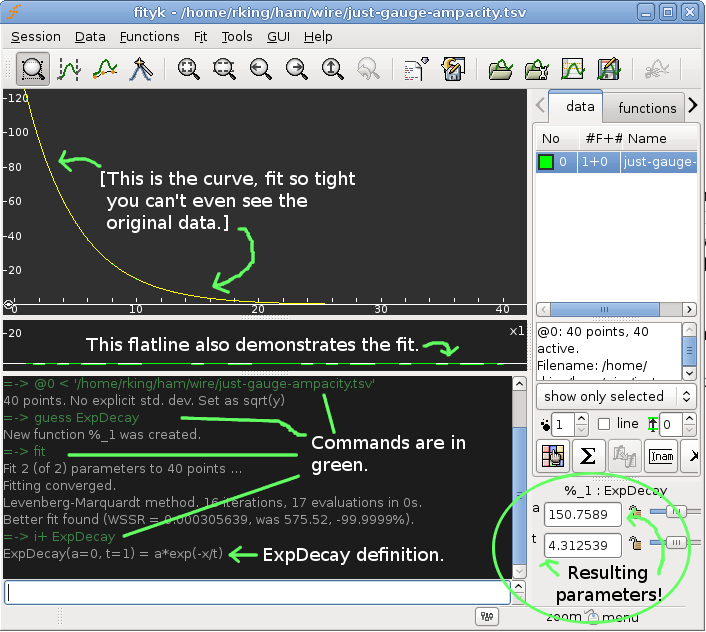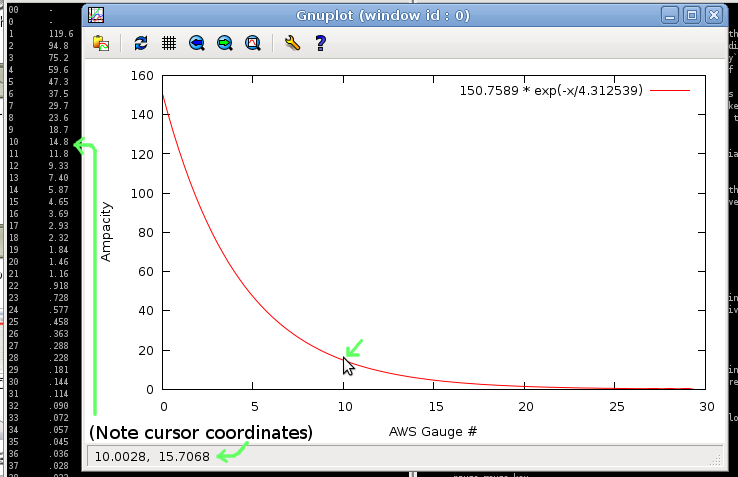This is part an answer to a question I was running into, and half a demonstration of some handy free/open-source tools.
The Ham General test asks questions such as this:
What is the minimum wire size that may be safely used for a circuit that draws up to 20 amperes of continuous current?
When I started this process, I had no idea about the answers. After Googling, I found a raw table of wire ampacities. That is a great start, and I could of course just look up this specific question, and keep doing so for similar questions until I developed a sense for it. But that's no fun.
Instead, I used Fityk to import the data and find out what function maps AWG gauge to its maximum Amp rating. Fityk is a favorite of mine. Though I have not used it much, when I do need it the process is rewarding and fun. The following commands did the trick:
commands > '/home/rking/ham/wire/awg.fit' @0 < '/home/rking/ham/wire/just-gauge-ampacity.tsv' guess ExpDecay fit i+ ExpDecay
Here is a screenshot of the process:

Once you learn how that interface works, you'll see that the solution is:
150.7589 * exp(-x/4.312539)
As a sanity check, I graphed it in Gnuplot, which is another rewarding program. Here is the source for that:
set ylabel "Ampacity" set xlabel "AWS Gauge #" set xrange[0:30] plot 150.7589 * exp(-x/4.312539) pause mouse
And here is a screenshot of the output, which looks reasonable to me:

If I had to describe that curve in terms of three segments between four points, I'd probably pick:
[0,∞] to [4,60] to [10,15], to [25,~0]
In other words, if it's between 4 and 10 gauge, its rating is proportionally 60 to 15 amps.
So, to answer the above question, 8 gauge should be safe for 20 amps, and I checked that this was the smallest gauge that would work using irb:
irb(main):021:0> 150.7589 * Math.exp(-8/4.312539) => 23.5853600904787 irb(main):022:0> 150.7589 * Math.exp(-9/4.312539) => 18.7041275376549
...Annnd unfortunately it turns out the answer the test wants is 12 gauge. Apparently the ARRL goes off of the NEC ratings, which is mentioned on the original page, but different figures are used in the table.